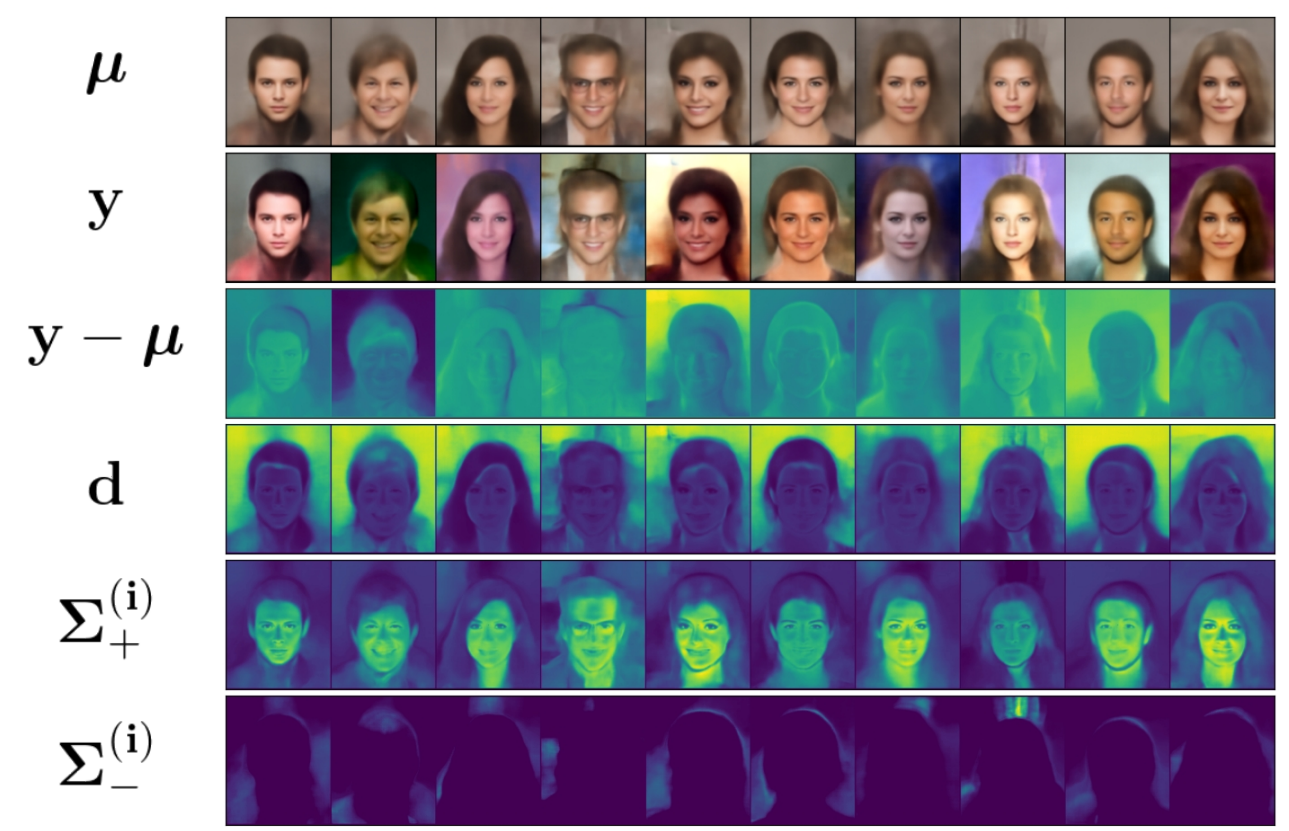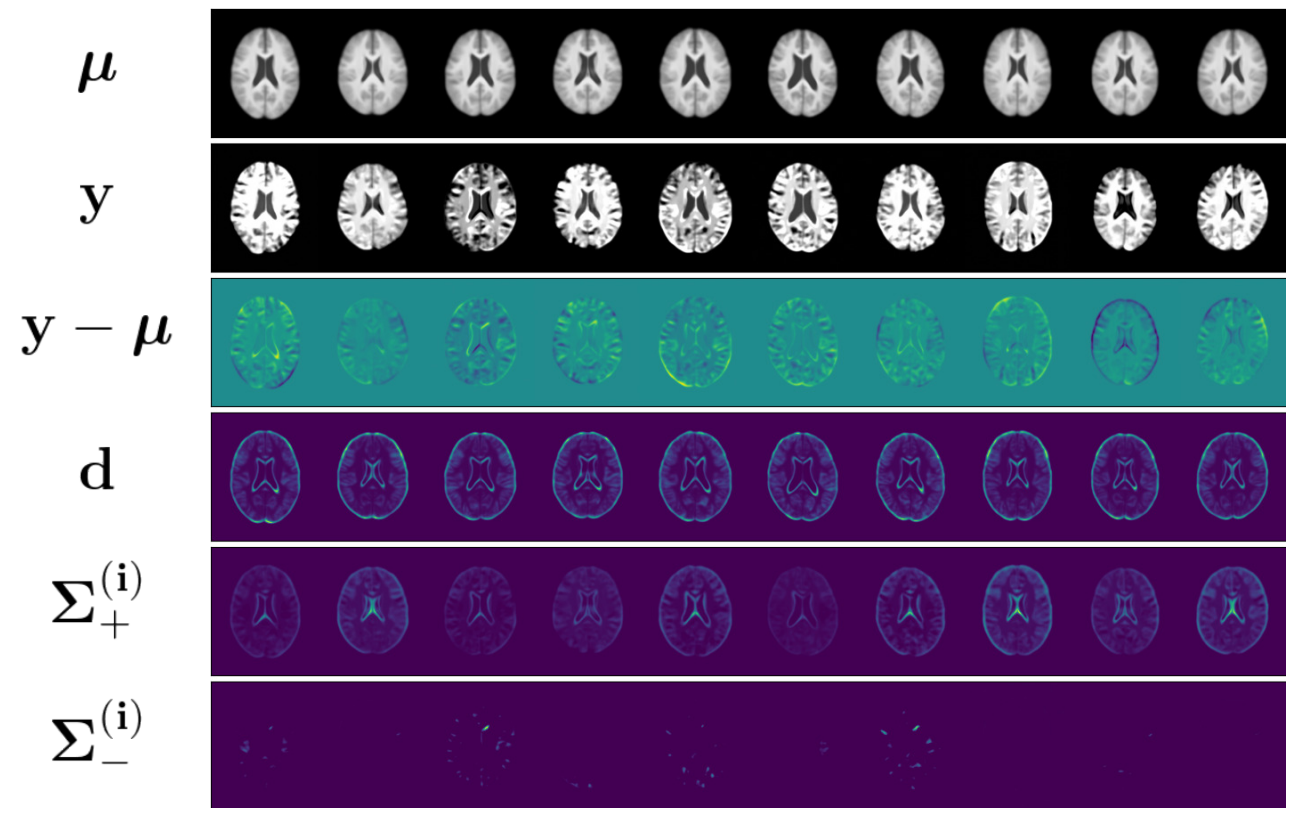This repository contains the code for the paper
J. Langley, M. Monteiro, C, Jones, N. Pawlowski, B. Glocker. Structured Uncertainty in the Observation Space of Variational Autoencoders. Transactions on Machine Learning Research. 2022 [OpenReview]
A virtual environment is recommended for this project. Create and activate a virtual environment as follows
python3 -m venv venv
source venv/bin/activateInstall required packages:
pip install -r requirements.txtIf running fails with a CUDA Runtime Error: make sure you have installed the correct torch binary compiled with your CUDA version.
- You can find the CUDA version by running
nvidia-smi
- You can find the version of CUDA torch was compiled with by running the following python
import torch torch.version.cuda
If the do not match (at least in major version number), you will need to install the correct version of torch (and torchvision).
To do so run the following command:
pip install torch==1.8.0+cu111 torchvision==0.9.0+cu111 -f https://download.pytorch.org/whl/torch_stable.html
With the correct torch (and torchvision) versions and and the right CUDA-compiled version. For example, the above command installs torch and torchvision versions 1.8.0 and 0.9.0 respectively with CUDA-compiled 11.1.
Now check torch.version.cuda matches (in at least major version number) nvidia-smi.
Good to go!
python main.pyFor options run python src/main.py --help to show the following:
usage: main.py [-h] [-g] [-f64] [-dnv] [-d] [-t] [-s] [-e EPOCHS]
[-b BATCH_SIZE] [-lr LEARNING_RATE] [-f LATENT_FEATURES]
[-r RANK] [-kl TARGET_KL] [-var TARGET_VAR] [-p PATCH_SIZE]
[-pre PRE_TRAIN] [--grayscale] [-cp CHECKPOINTS]
[--resume RESUME]
Train and evaluate network
optional arguments:
-h, --help show this help message and exit
-g, --gpu Evaluate using GPU if available
-f64, --float64 Evaluate using 64-bit floats. 32 otherwise
-dnv, --dist-no-val Disable distribution validation checks
-d, --deterministic Set deterministic/repeatable computation
-t, --title Enable title prompt
-s, --save Save model_dict upon run completion
-e EPOCHS, --epochs EPOCHS
Number of epochs to train for
-b BATCH_SIZE, --batch-size BATCH_SIZE
Batch size
-lr LEARNING_RATE, --learning-rate LEARNING_RATE
Learning rate
-f LATENT_FEATURES, --latent-features LATENT_FEATURES
Dimensionality of latent space
-r RANK, --rank RANK Rank of the decoder covariance
-kl TARGET_KL, --target-kl TARGET_KL
Target KL loss (per batch item)
-var TARGET_VAR, --target-var TARGET_VAR
Target mean variance of the output distribution
-p PATCH_SIZE, --patch-size PATCH_SIZE
Size of the ground truth patch used for correction in the visualiser
-pre PRE_TRAIN, --pre-train PRE_TRAIN
Number of epochs to pre-train the model for
--grayscale Run in grayscale
-cp CHECKPOINTS, --checkpoints CHECKPOINTS
Epoch interval between checkpoints. No checkpoints
otherwise
--resume RESUME ID of a previous run to resume running (if specified).
Resuming with modified args should be attempted with
caution
Use the above described --checkpoints argument, this program will save checkpoints at a user-specified interval of epochs.
Resuming a checkpointed run can be easily done by specifying the --resume argument with the respective ID.
Please note that resuming a checkpointed run does not remember the previous program arguments and should be called with the same arguments. Resuming a run with different arguments has been implemented, but should only be attempted with caution and expertise.
When a run that has been checkpointed finishes the final time, it is possible to make tensorboard see the individual checkpointed runs as one continuous run.
To do this, combine the events.out.tfevents.... under one subdirectory within the runs folder.
This project uses tensorboard for all logging
tensorboard --logdir runs --samples_per_plugin images=9999

